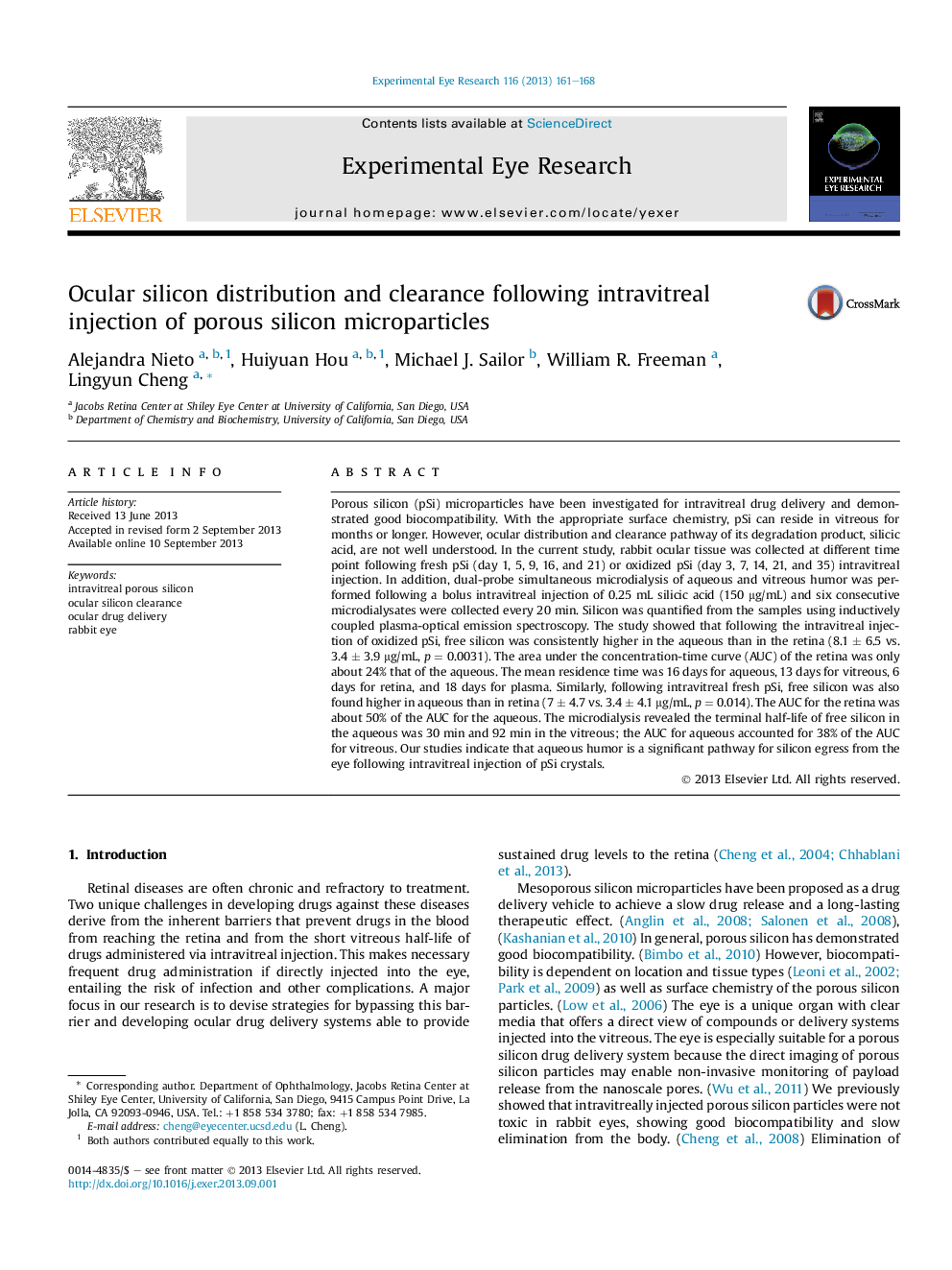| کد مقاله | کد نشریه | سال انتشار | مقاله انگلیسی | نسخه تمام متن |
|---|---|---|---|---|
| 6197201 | 1602606 | 2013 | 8 صفحه PDF | دانلود رایگان |

- Intravitreal porous silicon particle is not toxic to retina and can be degraded into silicic acid over time.
- The silicic acid can be cleared from the eye.
- More silicic acid is cleared from the eye through aqueous pathway than through retina pathway.
Porous silicon (pSi) microparticles have been investigated for intravitreal drug delivery and demonstrated good biocompatibility. With the appropriate surface chemistry, pSi can reside in vitreous for months or longer. However, ocular distribution and clearance pathway of its degradation product, silicic acid, are not well understood. In the current study, rabbit ocular tissue was collected at different time point following fresh pSi (day 1, 5, 9, 16, and 21) or oxidized pSi (day 3, 7, 14, 21, and 35) intravitreal injection. In addition, dual-probe simultaneous microdialysis of aqueous and vitreous humor was performed following a bolus intravitreal injection of 0.25 mL silicic acid (150 μg/mL) and six consecutive microdialysates were collected every 20 min. Silicon was quantified from the samples using inductively coupled plasma-optical emission spectroscopy. The study showed that following the intravitreal injection of oxidized pSi, free silicon was consistently higher in the aqueous than in the retina (8.1 ± 6.5 vs. 3.4 ± 3.9 μg/mL, p = 0.0031). The area under the concentration-time curve (AUC) of the retina was only about 24% that of the aqueous. The mean residence time was 16 days for aqueous, 13 days for vitreous, 6 days for retina, and 18 days for plasma. Similarly, following intravitreal fresh pSi, free silicon was also found higher in aqueous than in retina (7 ± 4.7 vs. 3.4 ± 4.1 μg/mL, p = 0.014). The AUC for the retina was about 50% of the AUC for the aqueous. The microdialysis revealed the terminal half-life of free silicon in the aqueous was 30 min and 92 min in the vitreous; the AUC for aqueous accounted for 38% of the AUC for vitreous. Our studies indicate that aqueous humor is a significant pathway for silicon egress from the eye following intravitreal injection of pSi crystals.
Journal: Experimental Eye Research - Volume 116, November 2013, Pages 161-168